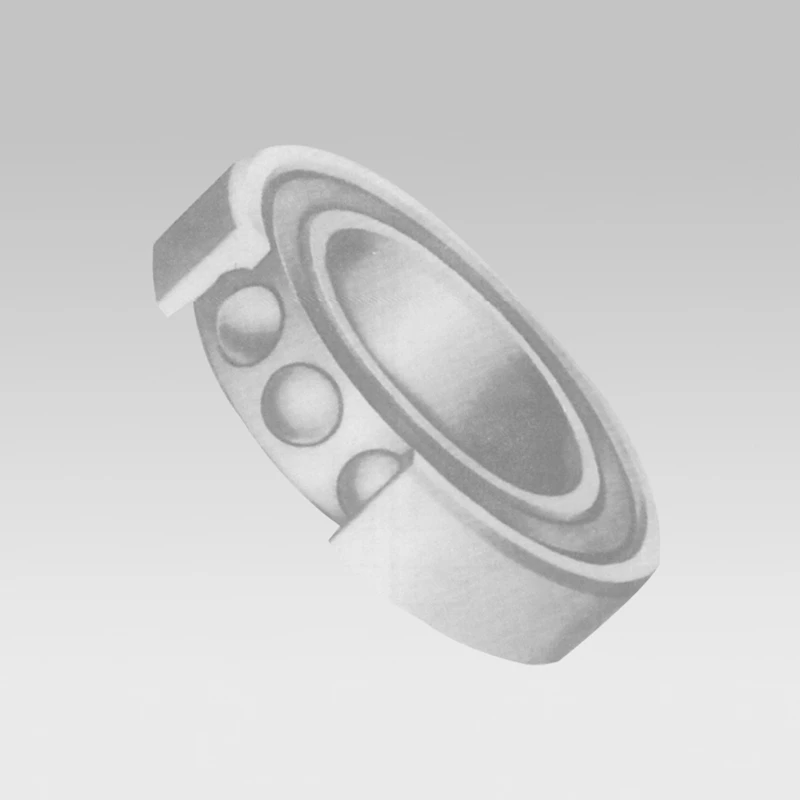
Dec . 23, 2024 04:11 Back to list
Innovative Ceramic Cylindrical Roller Bearings for Enhanced Performance and Durability
Ceramic Cylindrical Roller Bearings A Revolutionary Shift in Bearing Technology
Cylindrical roller bearings are pivotal components in various mechanical systems, providing support and reducing friction between moving parts. Traditionally, these bearings have been manufactured using steel, which offers decent performance for many applications. However, with evolving technology and materials science, ceramic cylindrical roller bearings are making significant inroads into this industry, offering several advantages that can transform how machinery operates.
What are Ceramic Cylindrical Roller Bearings?
Ceramic cylindrical roller bearings are a type of rolling element bearing in which the rolling elements (the cylindrical rollers) are made from advanced ceramic materials such as silicon nitride. These innovative components are designed to bear radial loads while offering minimal friction, facilitating smoother and more efficient movement. Their construction typically includes ceramic rollers and steel inner and outer races, but some designs also utilize ceramic for the races.
Advantages of Ceramic Materials
1. Wear Resistance One of the most notable properties of ceramic materials is their exceptional wear resistance. This characteristic significantly increases the lifespan of bearings, reducing the frequency and cost of maintenance. In high-load conditions, ceramic can withstand more stress compared to traditional materials, leading to improved durability.
2. Corrosion Resistance Ceramics are inherently non-corrosive, making ceramic cylindrical roller bearings ideal for use in harsh environments, such as those found in marine, chemical, or food processing applications. The resistance to corrosion means that these bearings maintain their integrity even when exposed to moisture or aggressive chemicals.
3. Low Density Ceramic materials have a low density compared to steel, which translates into lighter bearings. This feature is especially beneficial in aerospace and automotive applications, where reducing weight is crucial for enhancing fuel efficiency and overall performance.
ceramic cylindrical roller bearings

4. High Temperature Tolerance Unlike steel bearings, ceramic bearings can operate at significantly higher temperatures without suffering from thermal degradation. This property is essential for applications that involve high operating temperatures, such as engines and turbines.
5. Low Friction Ceramic cylindrical roller bearings typically exhibit lower friction coefficients than their steel counterparts, resulting in enhanced efficiency. The reduction in friction not only prolongs the life of the bearings but also contributes to energy savings in the entire system.
6. Lower Vibration and Noise The mechanical properties of ceramics lead to lower vibration and noise levels during operation. For applications sensitive to noise, such as medical equipment or precision instruments, this characteristic is particularly valuable.
Applications of Ceramic Cylindrical Roller Bearings
The applications of ceramic cylindrical roller bearings are vast and varied. In the aerospace industry, they are used in jet engines, where the combination of high temperature and pressure requires robust components. In automotive engineering, they contribute to performance enhancements in high-speed engines and electric vehicles. Additionally, in the field of robotics and automation, their durability and efficiency make them ideal for precision applications, where reliability is paramount.
Future Prospects
As industries continue to seek enhanced performance and sustainability, the demand for advanced materials like ceramics is expected to grow. Ongoing research and development efforts aim to improve the manufacturing processes of ceramic bearings, making them more accessible and cost-effective for widespread use. Innovations in composite materials and manufacturing techniques could further enhance the performance characteristics of ceramic cylindrical roller bearings, pushing the boundaries of what is possible in bearing technology.
In conclusion, ceramic cylindrical roller bearings represent a significant advancement in engineering materials. Their numerous benefits, including increased wear and corrosion resistance, lower weight, and superior performance under extreme conditions, make them a compelling choice for a variety of applications. As we look toward the future, it is clear that ceramic bearings will play a vital role in the evolving landscape of mechanical engineering, setting new benchmarks for efficiency and reliability in machinery.
Latest news
-
Spherical Roller Bearings Applications: Heavy Duty, Self-Aligning
NewsAug.30,2025
-
Premium Deep Groove Ball Bearings | High Speed & Reliability
NewsAug.29,2025
-
Durable Scaffolding Clamps - Secure & Reliable Tube Connectors
NewsAug.28,2025
-
Common Failures in Thrust Ball Bearings and Solutions
NewsAug.22,2025
-
How Tapered Roller Bearings Can Take Shock Loads
NewsAug.22,2025
-
Angular Bearings in High-Precision Spindles
NewsAug.22,2025
